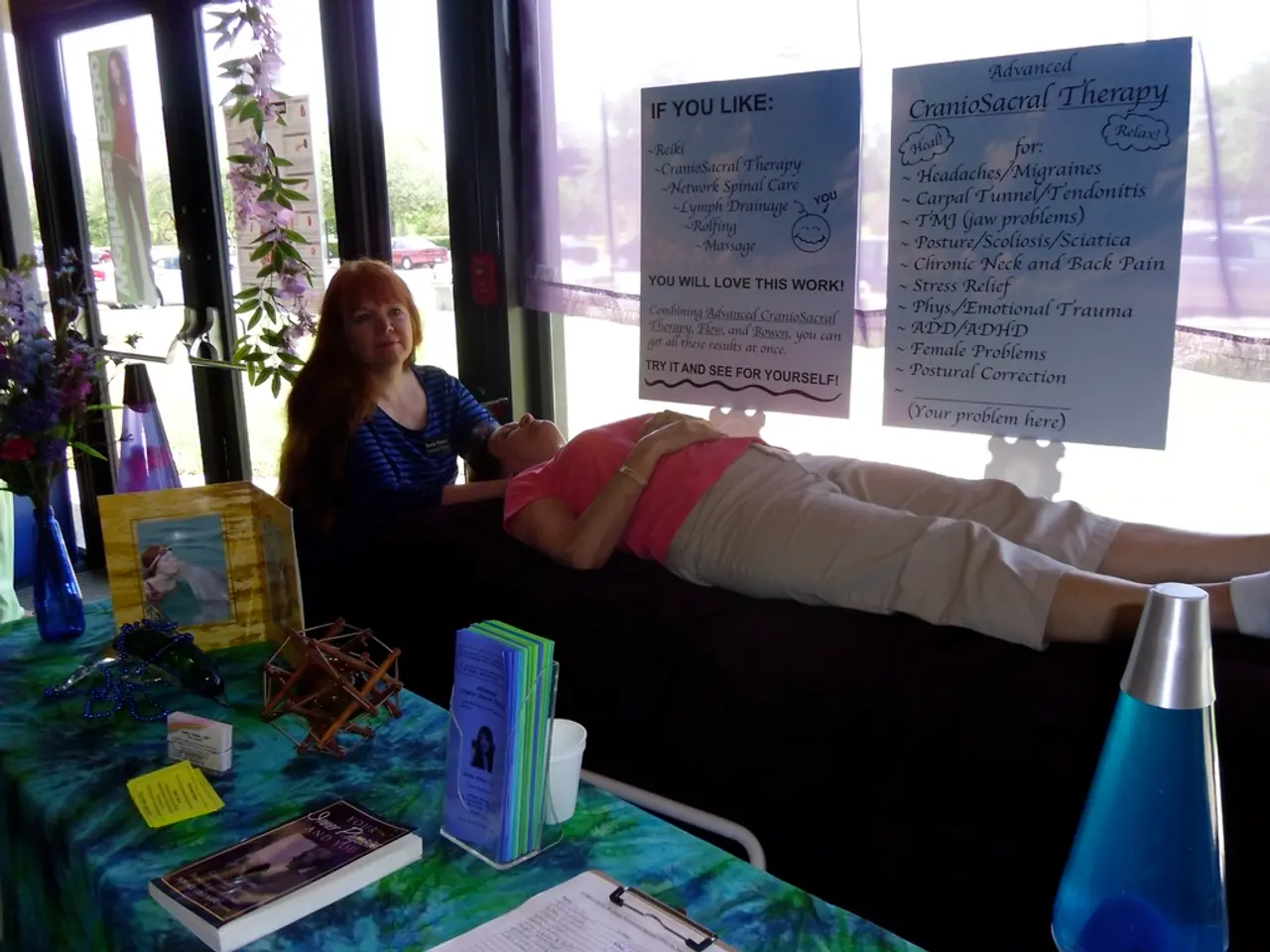Home Strategies to Alleviate Persistent Back Pain Without Resorting to Surgery
Chronic back pain can be a persistent and debilitating condition, but there are effective ways to manage it at home. By combining relaxation techniques, appropriate diet and exercise, proper mattress selection, regular stretching, and lifestyle adjustments, individuals can optimize their recovery and daily function while minimizing discomfort.
Relaxation Techniques
Stress-reducing methods like meditation, deep breathing, journaling, gentle yoga, Tai Chi, or Qigong can help calm the nervous system and relieve muscle tension. Even 10 minutes daily can improve pain coping and reduce sensitivity [1][3].
Diet Recommendations
Maintaining a balanced diet focused on anti-inflammatory foods can help reduce systemic inflammation that can exacerbate pain. Avoid excess weight to lessen pressure on the spine [1][3]. Foods high in inflammation, such as trans fats, processed foods, and refined sugars, should be limited.
Exercise and Stretching
Engage in low-impact exercises like walking, swimming, gentle yoga, or Pilates to maintain flexibility and strengthen core muscles that support the spine [1][4]. Regular stretching, including moves like the knee-to-chest stretch, can alleviate muscle tension and stiffness [4]. Incorporate postural exercises and balance training to improve spinal alignment and reduce strain [4]. Start your day with gentle stretching and stay hydrated to help reduce soreness and improve mobility [2][3].
Mattress Selection
Choose a medium-firm mattress that balances cushioning and support to maintain proper spinal alignment and relieve pressure. Popular options include memory foam, latex, or hybrid mattresses. If a new mattress is not feasible, consider a quality mattress topper [2].
Lifestyle Modifications
Maintain good posture while sitting and standing. Use ergonomic chairs and lumbar support if sitting for extended periods. Keep feet flat and knees at 90 degrees [1][3]. Use heat and cold therapy strategically—cold packs for the first 48 hours after an injury to reduce inflammation, then heat to relax muscles and increase blood flow, each applied for 15–20 minutes [1][3][5]. Avoid prolonged bed rest; instead, balance rest with gentle, controlled movements to prevent stiffness and muscle weakening [1][5]. Stick to a regular sleep schedule, minimize caffeine and screen time before bed, and create a dark, quiet, and cool sleep environment [3]. Track your pain and activity to identify triggers and effective pain relief practices [3].
Adapt and Accept Limitations
Adapting and accepting limitations due to chronic back pain is crucial in managing and preventing it from getting worse. This may include taking breaks when carrying groceries or avoiding activities that worsen back pain.
For severe cases, professional medical guidance is essential [1][5]. By incorporating these strategies into daily life, individuals can effectively manage chronic back pain and improve their quality of life.




